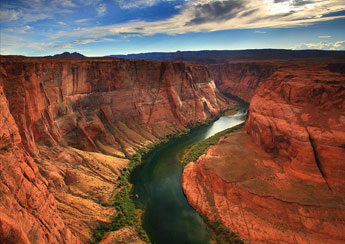Geological Time
What is geological time?

The geologic time scale is a system of chronological measurement that relates stratigraphy (study of rock layers and layering) to time, and is used by geologists, paleontologists, and other Earth scientists to describe the timing and relationships between events that have occurred throughout Earth's history (see The Age of the Earth).
The first geologic time scale was proposed in 1913 by the British geologist Arthur Holmes (1890 - 1965). This was soon after the discovery of radioactivity, and using it, Holmes estimated that the Earth was about 4.5 billion years old.
The evidence for an ancient Earth is concealed in the rocks that form the Earth's crust and surface. The rocks are not all the same age. Like the pages in a long and complicated history, they record the Earthshaping events and life of the past. The record, however, is incomplete. Many pages, especially in the early parts, are missing and many others are tattered, torn, and difficult to decipher. But enough of the pages are preserved to us with accounts of astounding episodes which certify that the Earth is billions of years old.
The geological time scale
Development |
|||
|---|---|---|---|
Humans develop "Age of mammals" Extinction of dinosaurs and many other species | |||
First birds |
|||
Extinction of trilobites and many other marine animals First reptiles Large coal swamps Large Amphibians abundant |
|||
First insect fossils Fishes dominant First land plants |
|||
First fishes Trilobites dominant First organisms with shells |
|||
First multicelled organisms First one-celled organisms |
|||